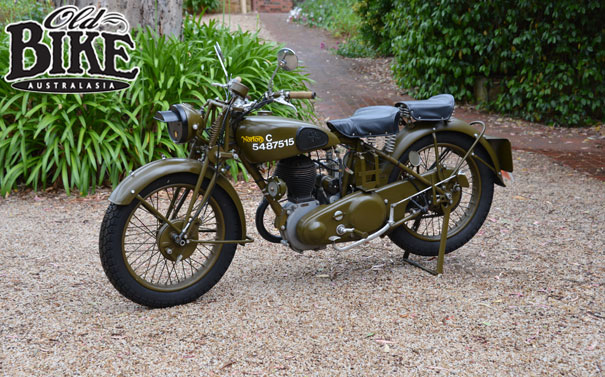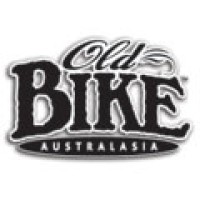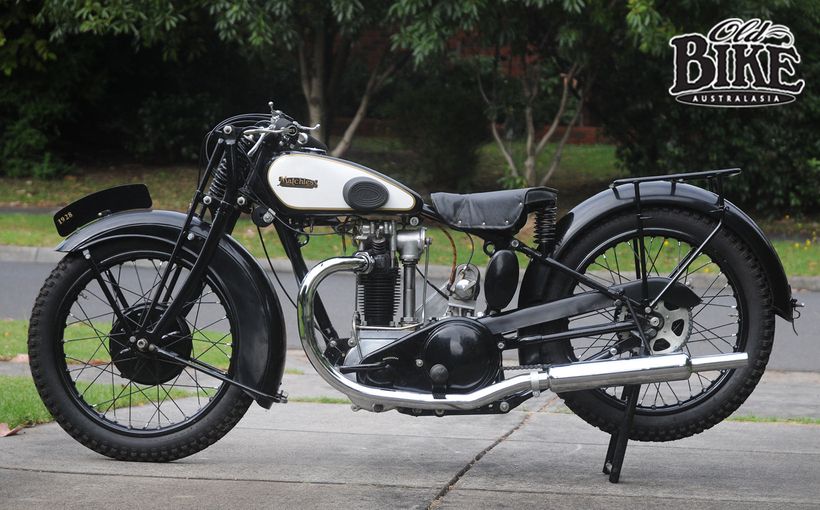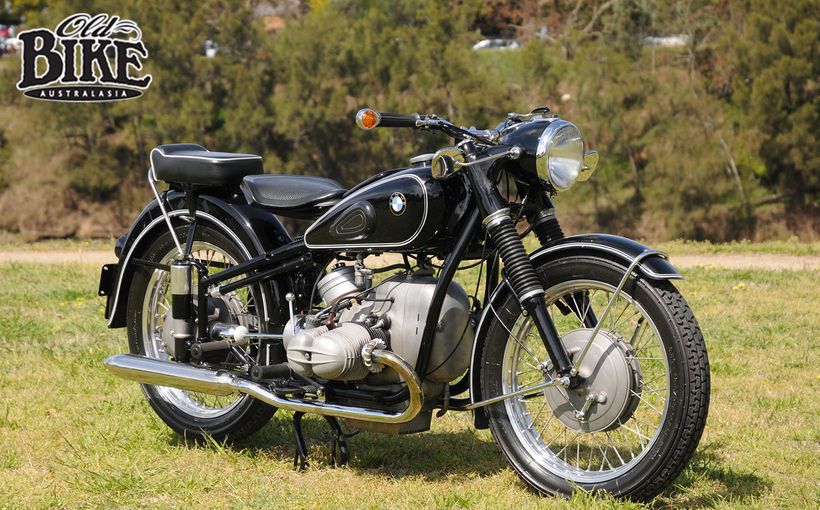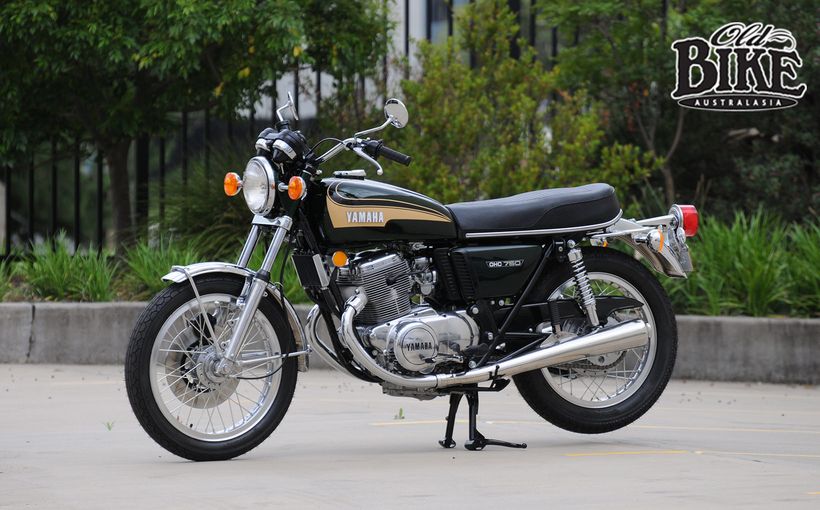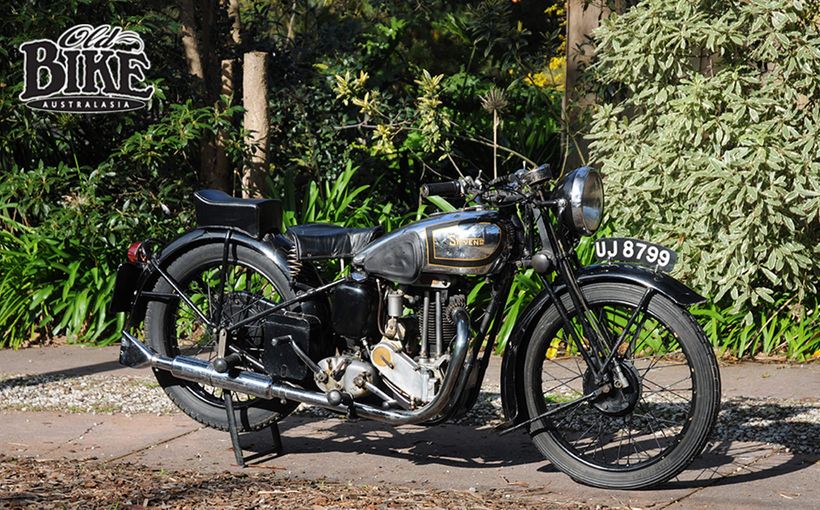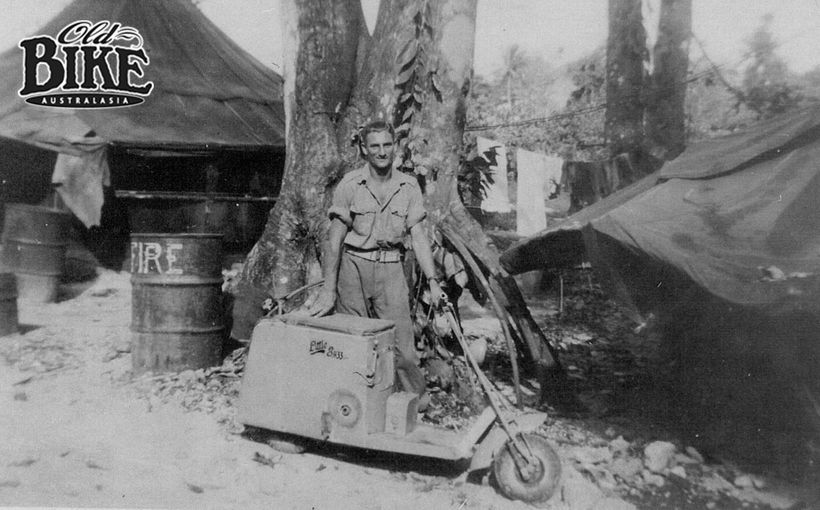Old Bike Australasia: Norton 16H War Horse

79mm x 100mm may well be the most famous bore and stroke in motorcycling history. Countless Norton singles, beginning with the 1911 490cc side valve, belt-driven Model 16, shared the configuration which lasted until the end of single cylinder production in 1963. That’s not a bad run, but in between times, the 16H earned a reputation as the favoured British military motorcycle of the Second World War. In fact, the 16H’s days in khaki started well before WW2, with the first order placed by the War Department in 1936, and the final deliveries made a full decade later. And it wasn’t just the army that took the 16H, with the Royal Air Force ordering hundreds which, prior to 1939, were painted in the distinctive RAF blue-grey, while the Royal Navy ordered theirs in RN grey.
It was 1921 when the 16H model was first catalogued. The main difference to the 16, which used the Big 4 frame, was a lower frame that had been built for, and used in, the 1920 TT. The ‘H’ stood for ‘Home’, as in market, while the export model, with the original frame, became known as the 17C (C for Colonial). Adjustable tappets appeared in 1922, eliminating the need to file the valve stem to obtain correct clearance, and in the same year an all-new overhead valve design appeared, still using the 79mm x 100mm dimensions, which was eventually marketed as the Model 18.
As early as 1932, a specially-prepared 16H had been provided for military evaluation, along with a 500cc ohv Model 18 and a 600cc ohv Model 19. After extensive testing, the side-valver got the nod and Norton and the war Department collaborated on the final specification for what would be known as the WD16H, of which almost 5,000 were built and delivered prior to the outbreak of war in 1939. By 1937, when the threat of war was becoming increasingly real, Smith’s persistence paid off and Norton received an official War Department contract for the supply of motorcycles. The 16H had by that stage been developed with enclosed valve gear, but the WD model used the original open valves, with the engine mounted in the frame that Norton had developed for trials with extra ground clearance, and girder forks with buffer stops. The WD16H immediately proved to be exactly what was required; robust, reliable, and easy to maintain. It was also relatively inexpensive to manufacture, which did Norton no harm at all. Around 100,000 16H models were to be manufactured for the war effort.

Owner of the bike featured here, Robert Elliot, spent many years restoring a very tired 16H. Even in the late 1980s, military parts were relatively easy to come by, as there were caches of such parts in places like India and Malaysia. Rob set out to find the necessary bits which included the ‘blackout’ headlight, steel footpegs with no rubbers, the special rebound bumper assembly for the front forks (fitted to absorb major shocks such as falling into trenches and potholes), canvas (not rubber) hand grips, an offset speedo bracket so the speedo cable would not get trapped in the forks, a speedo without a trip-meter, and a headlight switch with an extra “T” for taillight position so that only the tail light worked during convoy missions.

“The restoration took me two years and was completed in 1992. I’ve ridden it on a number of long runs such as the Bay to Birdwood and Burra to Morgan events since. The restoration of the bike was completed just after I met my wife Diana. A lot of our early dates were with Diana on the back of one or other of my bikes. Being interested in history herself and having grown up with motorbikes in her family, she didn’t hesitate getting into the spirit of things, donning an army uniform and going pillion numerous times on these lengthy runs. It wouldn’t be a particularly comfortable ride I would imagine, given the size of the small sprung pillion seat mounted on the rear mudguard (there were no complaints from Diana however). Parts of the uniform we wore were my father’s old army gear. I wore my father’s slouch hat (when not riding the bike of course) and we both wore his gaiters and belts.

“Riding the bike is a real pleasure, it’s light and easy to handle, yet torquey and surprisingly quick. I’ve owned Vincents, with the kudos they carry, as well as other sought-after and performance bikes, but the 16H is always more fun. There are plenty of Norton WD16H fanatics (and BSA M20 for that matter), especially in Europe. There are events such as recreations of the Normandy landings for these enthusiasts to participate in. For everything you could ever want to know about Army Nortons you can’t go past Rob Van Den Brink’s Dutch website (thankfully all in English); www.wdnorton.nl”
Protect your Norton. Call Shannons Insurance on 13 46 46 to get a quote today.

